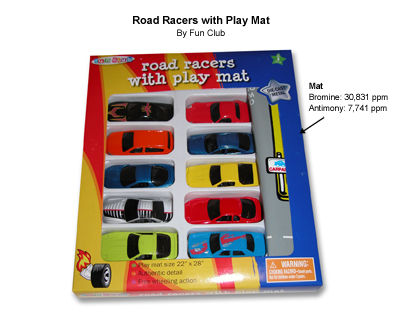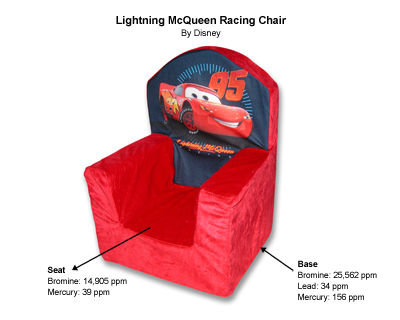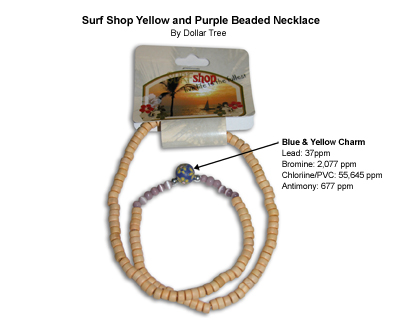- By HralthyToys.org
- Around Town
 Print
Print  Members of the New York State advocacy collaboration the JustGreen Partnership, The Ecology Center, a Michigan-based nonprofit organization, and partners across the country today released the 2nd annual consumer guide to toxic chemicals in toys at HealthyToys.org . Researchers tested over 1,500 popular children’s toys for lead, cadmium, arsenic, PVC and other harmful chemicals in time for this year’s holiday shopping season.
Members of the New York State advocacy collaboration the JustGreen Partnership, The Ecology Center, a Michigan-based nonprofit organization, and partners across the country today released the 2nd annual consumer guide to toxic chemicals in toys at HealthyToys.org . Researchers tested over 1,500 popular children’s toys for lead, cadmium, arsenic, PVC and other harmful chemicals in time for this year’s holiday shopping season. One in three toys tested were found to contain “medium” or “high” levels of chemicals of concern. In New York, the report was released in lower Manhattan, the Bronx, Albany, Ithaca, Syracuse and Buffalo. Lead was detected in 20% of the toys tested this year.

In fact, lead levels in some of the products were well above the 600 parts-per-million (ppm) federal recall standard used for lead paint, and will exceed the U.S. legal limit beginning in February, according to the new Consumer Product Safety Commission (CPSC) regulations. Levels of lead in many toys were significantly above the American Academy of Pediatrics recommended ceiling of 40 ppm of lead in children’s products. Children’s jewelry remains the most contaminated product category, maintaining its spot at the top of HealthyToys.org’s “worst” list.
The CPSC regulations, which go into effect in February 2009, would make certain products on the shelf this holiday season illegal to sell two months from now.
Experts insist that these new regulations, while a good first step, do not go nearly far enough to protect our children.
“There is simply no place for toxic chemicals in children’s toys,” said Bobbi Chase Wilding, Organizing Director for Clean New York, which co-coordinates the JustGreen Partnership. “Manufacturers and lawmakers should feel the ongoing and increasing demand for children’s products that are healthy and safe – and ensure they are made without any highly toxic chemicals.”
Wilding’s daughter Ananda, who turned four years old today, said, “All kids should have healthy toys in their toy boxes. For my birthday, I wish our leaders would make that happen.”
In addition to allowing parents to search by product name, brand, or toy type to see if certain toys have toxic chemicals, the newly-redesigned site also allows visitors to create a personalized holiday wish list that can be sent to family and friends, and a blog-friendly widget to quickly search the toy ratings.

“This study is very alarming, but the website offers some answers to the immediate questions parents and others will have and some action steps they can take to get laws changed and adhered to. Everyone needs to know about this,” Shawn Galbreath, executive director of the locally-based Cancer Resource Center of the Finger Lakes in Ithaca, NY “Our Center is focused on the disease of cancer, so the issues of dangerous toxins remaining unchecked in consumer products, especially infant and children’s toys and care products is simply unconscionable.”
Researchers tested for chemicals that have been associated with reproductive problems, developmental and learning disabilities, hormone problems and cancer; and for those that have been identified by regulatory agencies as problematic. Babies and young children are the most vulnerable populations because their brains and bodies are still developing, and because they frequently put toys into their mouths. The testing was conducted with a screening technology – the portable X-Ray Fluorescence (XRF) analyzer – that identifies the elemental composition of materials on or near the surface of products.
Highlights from the HealthyToys.org 2008 findings:
- Lead is Still in Toys – HealthyToys.org found lead in 20% of all the products tested this year, including 54 products (3.5%) that exceed the current 600 ppm recall threshold for lead-based paint, and the soon-to-be national standard for all children’s products. When children are exposed to lead, the developmental and nervous system consequences can be irreversible. The American Academy of Pediatrics has recommended a level of 40 parts per million (ppm) of lead as the maximum that should be allowed in children's products.
- It’s Not Just China – HealthyToys.org has not found a consistent correlation between the country of manufacture and the presence of toxic chemicals in toys. 21% of toys from China and 16% of those from all other countries had detectable levels of lead in 2008. 17 toys manufactured in the U.S. were sampled and 35% of those had detectable levels of lead. Two toys had levels above 600 ppm. Among the highest lead levels detected in HealthyToys.org (190,943 ppm) was in a Halloween Pumpkin Pin made in the USA.
- It’s Not Just Lead – HealthyToys.org found a significant number of toys containing cadmium, mercury, arsenic, and bromine. 2.9% (45 products) had bromine at concentrations of 1,000 ppm or higher. This indicates the likely use of brominated flame retardants -- chemicals that may pose hazards to children’s health. Other toxic chemicals found in toys include arsenic, cadmium, and mercury. Arsenic was detected at levels greater than 100 ppm in 22 or 1.4% of products; 289 (18.9%) of products contained detectable levels of arsenic. Cadmium was found above 100 ppm in 30 (1.9%) of products; 38 (2.4%) of products contained detectable levels of cadmium. Mercury was found above 100 ppm in 14 (1%) of products; 62 (4.2%) of products contained detectable levels of mercury.
- Polyvinyl Chloride (PVC /Vinyl) – HealthyToys.org identified products made with PVC plastic by measuring their chlorine content. PVC is problematic because it creates major environmental health hazards in its manufacture and disposal and may contain additives, including phthalates, that may pose hazards. 27% of toys (excluding jewelry) tested this year by HealthyToys.org were made with PVC.
- Jewelry – Jewelry remains the most contaminated product category tested. Children's jewelry is five-times more likely to contain lead above 600 ppm than other products. 15% of jewelry samples (compared to 3% of other products) had lead levels above 600 ppm. Overall, jewelry is twice as likely to contain detectable levels of lead as other products. Numerous Hannah Montana brand jewelry items tested high for lead. HealthyToys.org recommends that consumers avoid low cost children's jewelry.
- The Good News – The good news is that 62% (954) of the products tested contain LOW levels of chemicals of concern, and 21% (324) of all products tested contain NO chemicals of concern. These products look and feel no different than other children’s products on the shelf. These findings show that manufacturers can and should make toys free of unnecessary toxic chemicals.
HealthyToys.org provides quick actions people can take to urge government agencies and manufacturers to phase out toxic chemicals from children’s products immediately and reform our laws to protect children. The JustGreen Partnership is working with New York policymakers to improve the State’s infrastructure to address toxics in products. Steps advocated by the Partnership include: categorize chemicals of high concern, prioritize within that list based on these chemicals use in products to which children are exposed, require manufacturers to disclose which of their products contain such chemicals, and empower the state to conduct alternatives assessments to determine the availability of safer substitutes and require them when feasible.
Njara Stout, Cancer Resource Center Board member and advocate stated, “We have always advocated for the position of the “Precautionary Principle”. That is, the view that when science has not yet determined whether a new product or process is safe or unsafe, policy should prohibit or restrict its use until it is known to be safe. No item or substance may be introduced (into an ecosystem, population, state, and the human body) without strong-tested assurance that it won't cause harm.”

With millions of toys on the market, HealthyToys.org could not test them all. However, visitors to the website can nominate other products to be tested. The most commonly requested items will be tested each week leading up to the Holidays.
Cancer Resource Center of the Finger Lakes joined the JustGreen Partnership because of its interest and concern with environmental health in the communities it serves, and beyond.
“We should not be waiting until significant damage is done or a “significant number” of deaths occur to deal with this. Nor should the public be kept in the dark. There are toys and products on the market, on sale right now, right here in our community that are banned to be sold after February. We as consumers are generally trusting manufacturers and the government to operate in our best interest, and yet the facts show otherwise and the information has not made widely available. Its shameful.” Concluded Galbreath.
----
v4i46



